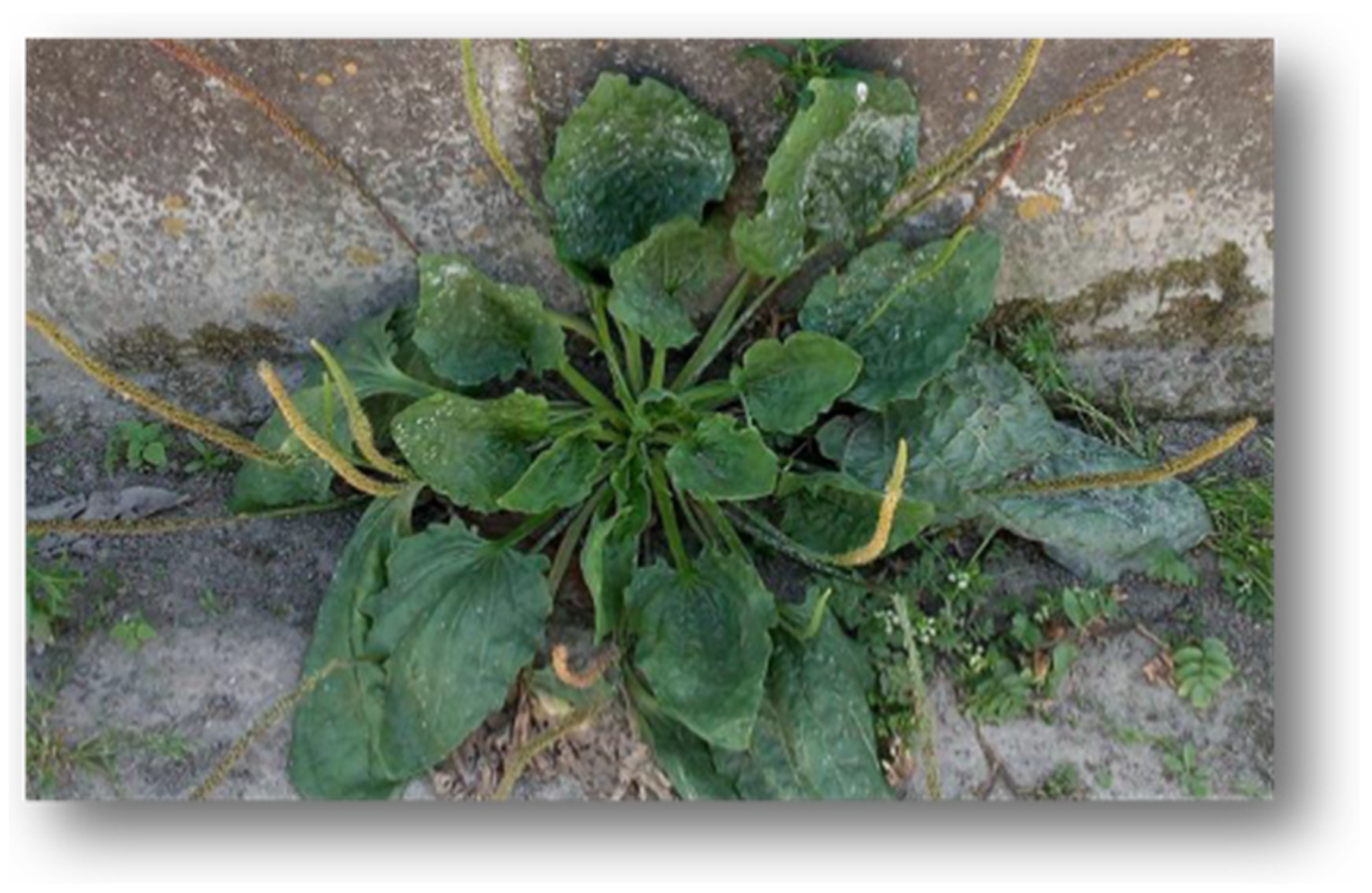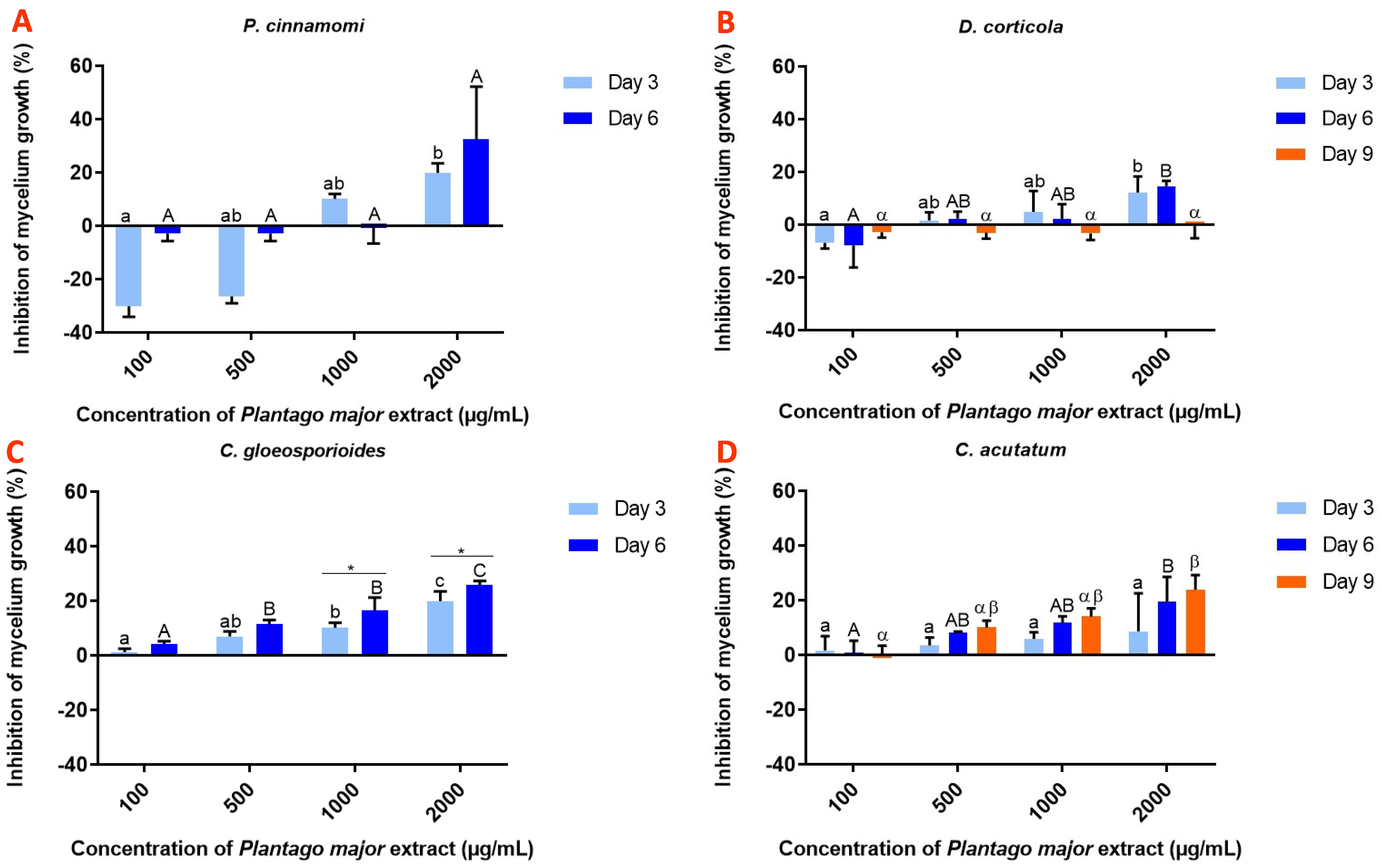Protective Antifungal Activity of Plantago major Extract Against the Phytopathogenic Fungi Phytophthora cinnamomi, Diplodia corticola and Colletotrichum Species †
Abstract
:1. Introduction
2. Material and Methods
3. Results
4. Conclusions
Institutional Review Board Statement
Informed Consent Statement
Data Availability Statement
References
- Frank, R.; Braun, H.E.; Ripley, B.D. Residues of insecticides and fungicides on Ontario-grown vegetables, 1986–1988. Food Addit. Contam. 1990, 7, 545–554. [Google Scholar] [CrossRef] [PubMed]
- Wang, P.; Yang, M.; Jiang, L.; Wu, Y.J. A fungicide miconazole ameliorates tri-o-cresyl phosphate-induced demyelination through inhibition of ErbB/Akt pathway. Neuropharmacology 2019, 148, 31–39. [Google Scholar] [CrossRef] [PubMed]
- Sukul, P. Enzymatic activities and microbial biomass in soil as influenced by metalaxyl residues. Soil Biol. Biochem. 2006, 38, 320–326. [Google Scholar] [CrossRef]
- Wightwick, A.; Walters, R.; Allinson, G.; Reichman, S.; Menzies, N. Environmental Risks of Fungicides Used in Horticultural Production Systems. In Fungicides; IntechOpen: London, UK, 2010. [Google Scholar] [CrossRef]
- Lucas, J.A.; Hawkins, N.J.; Fraaije, B.A. The Evolution of Fungicide resistance. In Advances in Applied Microbiology; Elsevier: Amsterdam, The Netherlands, 2015; Volume 90, ISBN 9780128022757. [Google Scholar]




Publisher’s Note: MDPI stays neutral with regard to jurisdictional claims in published maps and institutional affiliations. |
© 2020 by the authors. Licensee MDPI, Basel, Switzerland. This article is an open access article distributed under the terms and conditions of the Creative Commons Attribution (CC BY) license (https://creativecommons.org/licenses/by/4.0/).
Share and Cite
Ferreira, C.; Oliveira, R. Protective Antifungal Activity of Plantago major Extract Against the Phytopathogenic Fungi Phytophthora cinnamomi, Diplodia corticola and Colletotrichum Species. Proceedings 2021, 70, 94. https://doi.org/10.3390/foods_2020-07678
Ferreira C, Oliveira R. Protective Antifungal Activity of Plantago major Extract Against the Phytopathogenic Fungi Phytophthora cinnamomi, Diplodia corticola and Colletotrichum Species. Proceedings. 2021; 70(1):94. https://doi.org/10.3390/foods_2020-07678
Chicago/Turabian StyleFerreira, Cláudia, and Rui Oliveira. 2021. "Protective Antifungal Activity of Plantago major Extract Against the Phytopathogenic Fungi Phytophthora cinnamomi, Diplodia corticola and Colletotrichum Species" Proceedings 70, no. 1: 94. https://doi.org/10.3390/foods_2020-07678
APA StyleFerreira, C., & Oliveira, R. (2021). Protective Antifungal Activity of Plantago major Extract Against the Phytopathogenic Fungi Phytophthora cinnamomi, Diplodia corticola and Colletotrichum Species. Proceedings, 70(1), 94. https://doi.org/10.3390/foods_2020-07678



